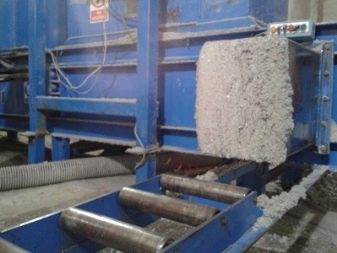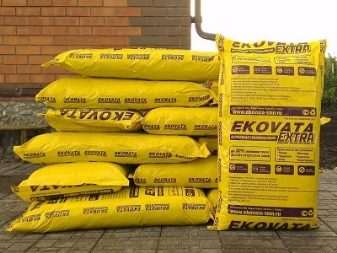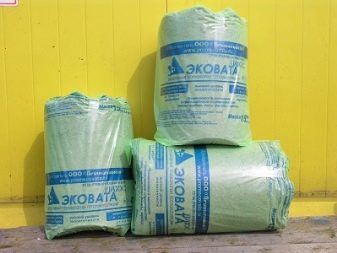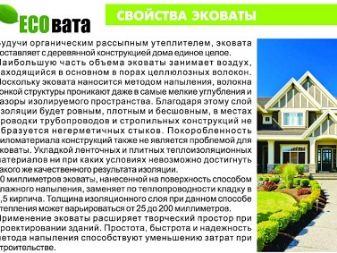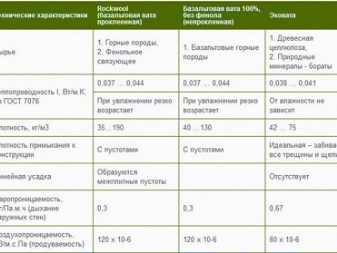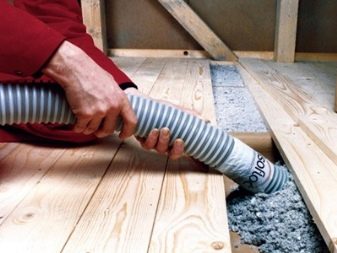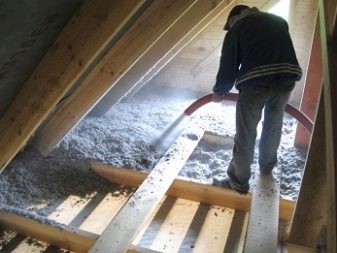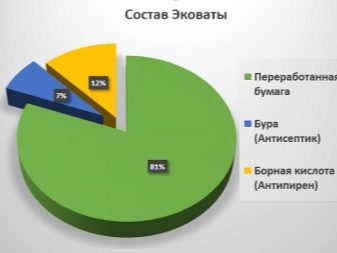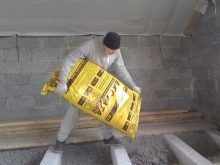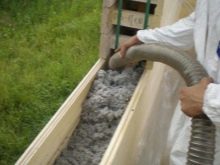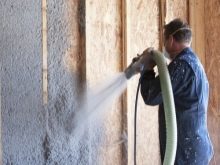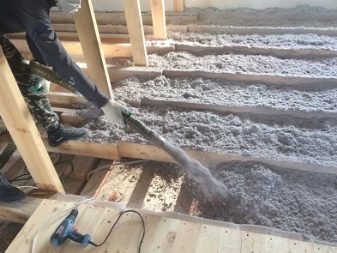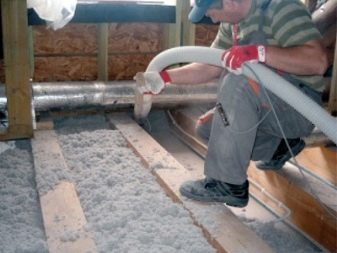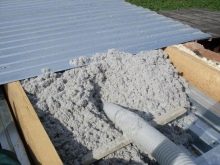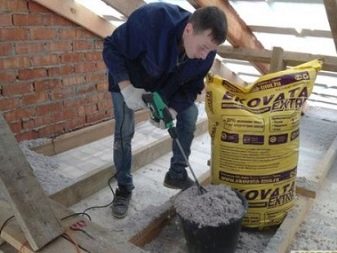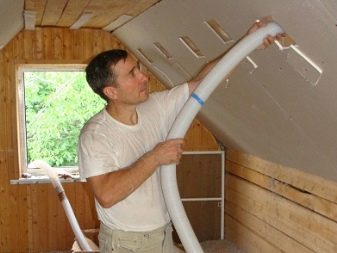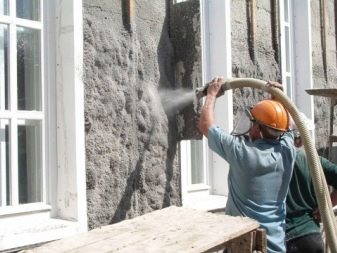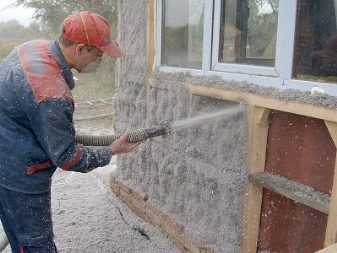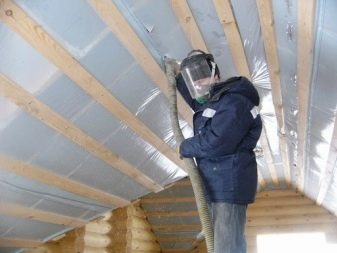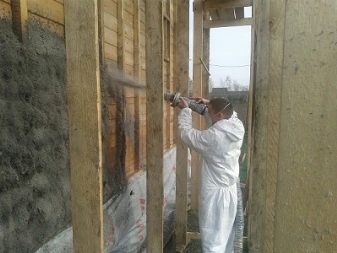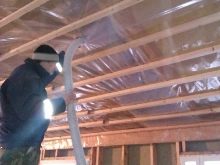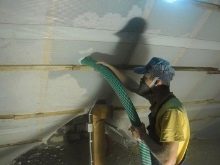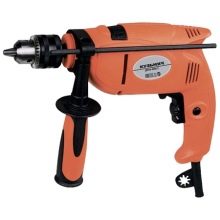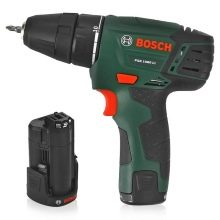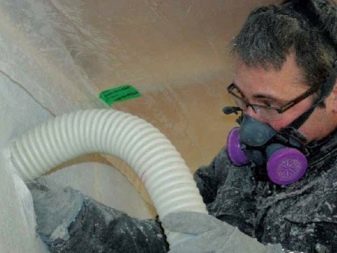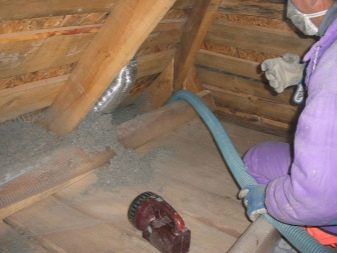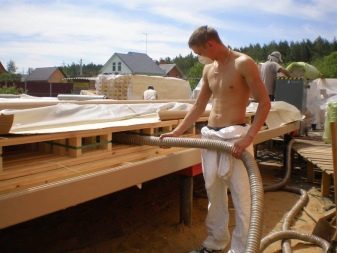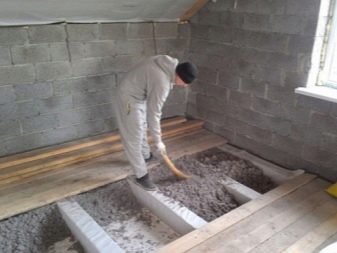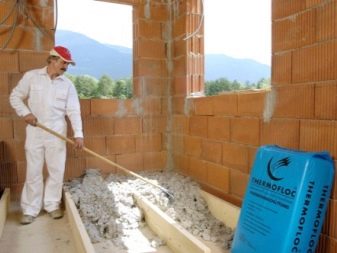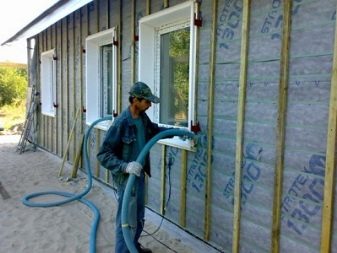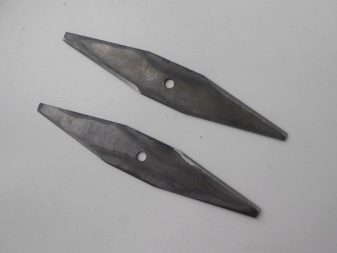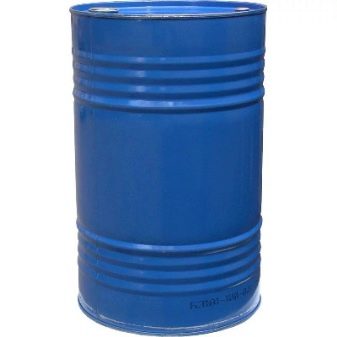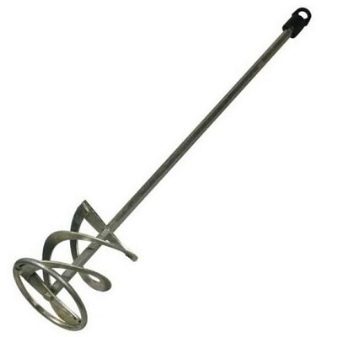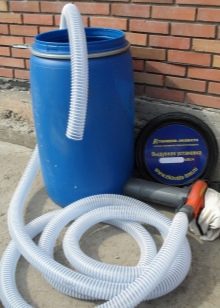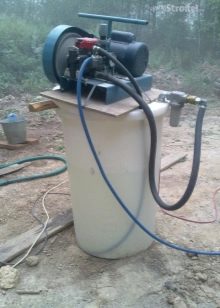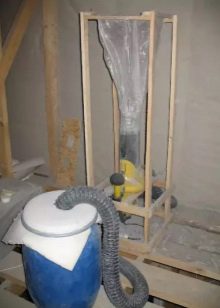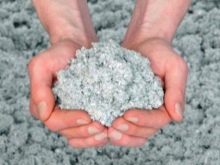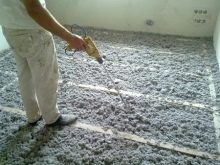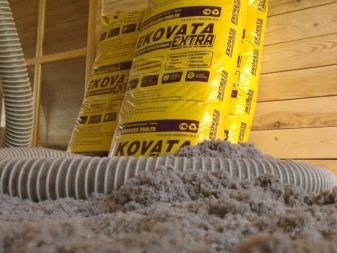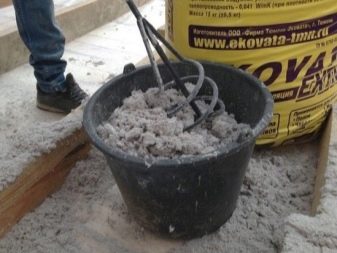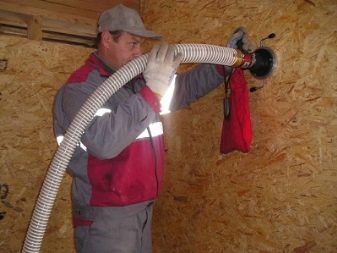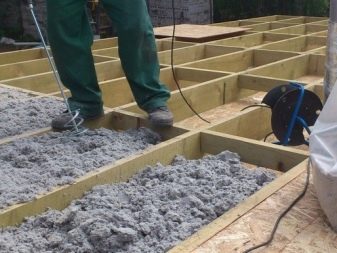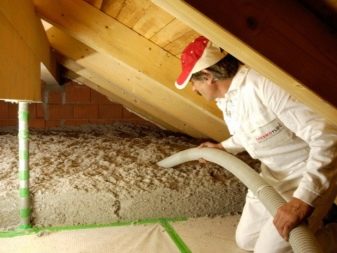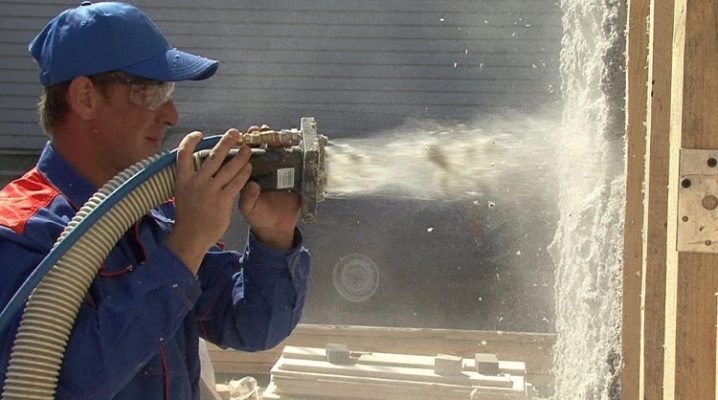Where is ecowool used and what are its benefits?
The use of each insulating material has its own characteristics and nuances. This fully applies to environmental wool. It is necessary to understand all the points in advance - before starting the installation work and even before choosing a specific option.
Origin and Manufacturers
The thermal qualities of cellulose were familiar to people in the nineteenth century. It was then that patented technology of thermal insulation based on recycled paper. But such trends reached the post-Soviet space relatively recently, only in the 1990s. The fine fraction of cellulose fibers is crushed and foamed in production, but this does not end there.The mass is necessarily treated with antiseptic and flame retardant compounds that suppress rotting and inflammation and prevent material from mold.
Ecological purity of the material with special treatment is not violated - this is a product that is produced only with natural ingredients. Suppression of a flame provides the drill occupying up to 12% of weight. To ecowool is not rotten, you must use up to 7% boric acid. In Russia, there are now about a dozen companies that produce environmental wool. The main positions on the market are occupied by LLC Ekovata, Urallesprom, Promekova, Vtorma-Baikal, Equator and some others.
Properties and specifications
The thermal conductivity of environmental wool is the most important indicator for any insulation, ranging from 0.032 to 0.041 W / (m · ° C). The density of various samples ranges from 30 to 75 kg per 1 cu. Depending on the technological features and other aspects, environmental cotton wool belongs to groups of substances with weak, moderate or normal flammability. In 60 minutes, 0.3 mg of water vapor can pass through a meter of cotton wool.Speaking about the technical characteristics, it is impossible not to mention that cotton pad can hold up to 1/5 of water without losing its basic qualities.
Strict adherence to technological standards avoids shrinkage. The properties of the insulation help to mount it very quickly, including in hard-to-reach areas and on sophisticated surfaces. During the repair and restoration of various structures it is possible to warm them without dismantling them. Moreover, cotton blocks can become compaction, correcting structural defects.
Manufacturers' recommendations point out that this solution is optimal for old buildings and log cabins.
Advantages and disadvantages
The substance is delivered to the deep part of the structure through a flexible hose under pressure; cellulose fibers fill 100% of all cavities and gaps, excluding the formation of the slightest seams and slit areas. It is much more practical than warming plates or rolls, when the seams instantly spoil the overall picture.
In customer reviews, it is noted that ecowool does not allow water to condense out of the air circulating through the pores.Glass fibers and stone insulation can accumulate moisture, but the capillaries of cellulose completely pass it through themselves, no matter how much this moisture is.
Since ecological cotton wool significantly simplifies the formation of a “cake”, you can do without vapor barrier layers.
The fundamental rejection of harmful and volatile substances allows not to fear for their health. Even if the house is completely engulfed in fire, ecological wool will not give off poisonous gas. Moreover, it will not burn itself and will become an obstacle in the path of the flame. This does not mean that the material has only advantages, it has disadvantages:
- it will not be possible to mount the insulation structure without complicated machines;
- Ecowool does not tolerate mechanical loads and fits only in the gaps of the bearing parts of the structure;
- moisture resistance for many practical situations is insufficient.
Composition and structure
Insulation can be externally confused with mineral wool. But there is an important difference - the flowability of the product. After all, the fibers do not have rigid mechanical bonds, they are held solely by the adhesion of particles at the micro level and by the forces of the electric field. It is recommended to know in advance what the quality of the waste used is - the higher it is, the better the resulting product. The volume concentration of boric acid is from 7 to 10%, the same amount is introduced sodium tetraborate.
Application Methods
Environmental wool can be:
- applied manually;
- to blow in the mechanized dry way;
- spray after wetting to the surface.
The manual method involves loosening tools in any suitable container. On the warmed surfaces laying is made by a uniform layer. If it is required to warm the cavity in the wall, then it is necessary to fill in the ecological wool there. The minimum density of laying in the wall is from 65 kg per 1 cu. m, and inside the ceiling, this figure is limited to 40 kg per 1 cu. m
One should not think that it is so easy to put ecowool with your own hands. Work will require accuracy, care and a considerable waste of time. Such installation is justified financially only with a small amount of work.
If you want to insulate large building structures, it is advisable to use complex equipment.The dry mechanized method involves the attraction of blowing machines, in the bunkers of which the insulation is loosened, and then fed in the air flow to the right place. This technique has proven itself in relation to:
- interfloor overlappings;
- floors attics;
- basement gaps.
It does not matter whether the construction is carried out from scratch or the building has been in operation for some time. Inflow is carried out with a certain margin, because even loosening gives only a limited effect on time. Gradually cotton wool compacted, its specific weight will increase by 5 kg per 1 cu. m. Then, if the preliminary reserve was not made, the thickness of the thermal barrier will be reduced. How it will end for the tenants is hardly necessary to explain.
Dry blowing is equally technologically sophisticated for surfaces directed in a horizontal or vertical plane, as well as for inclined structures. You can apply a similar method on the gable and on the sloping roof, for thermal protection of walls covered with a gypsum layer. Preparing for the introduction of ecological wool involves the creation of holes in the film materials into these holes and a stream of matter must be supplied.
The wet method is distinguished only by feeding cotton wool mixed with water (sometimes also with glue).At the same time, you need a completely different equipment that is not suitable for dry processing (and vice versa).
Simplify the work and do not apply in some cases to specialists, if you use a garden vacuum cleaner. Preparation begins with the beating of cotton with a construction mixer - any capacity of the required size will do for this. Backfilling is about half the height, and the mixer should be turned off when the material does not rise to its outer edge. Using a garden vacuum cleaner helps save money, but will require an assistant. In addition, the vacuum cleaner will have to modify, in its standard guise, it is not quite suitable.
Important: this method allows only dry processing. If you need damp insulation, you will still have to call professional installers with special machines. It is undesirable to take a garden vacuum cleaner with an internal grinder. For work, you will need a flexible hose of corrugated execution, the sleeve length is from 7 to 10 m, and a suitable diameter is 6-7 cm.
When selecting a hose, they are guided by the outlet of the vacuum cleaner, on which the sleeve should sit as tightly as possible.
Bag for waste collection in this case to anything. Instead, a corrugation is put on the pipe. To facilitate the removal of the bag helps the destruction of the teeth holding it with nippers. To fix the corrugations is recommended to use adhesive tape or insulating tape. In either case, you will have to check if the air will not leak out through the joint.
Warming the floor begins with beating eco wool in a barrel with high walls. It is not necessary to greatly increase the volume of the material. The pipe nozzle is immersed in a heater, and at this time someone is holding the hose tip to the floor itself. This technique allows to reduce the emission of dust out. It is better to cover the floor with a boardwalk and reserve a free board for each of the cells, then you will have to fight less dust.
Walls, insulated with ecowool, are initially sewn up with oriented plates. At 0.1 m from the ceiling, holes are prepared corresponding to the diameter of the corrugated pipe. The hose inserted there should not be brought to the floor by about 30 cm. When saturating the walls with cotton, they carefully monitor the sound of the vacuum cleaner. One has only to change the tone of the suction, you need to immediately raise the hose to the next 30 cm (several holes will increase the accuracy of the work).
Application
Warming the walls of a wooden house with ecological cotton is attractive because it does not impair the sanitary, ecological properties of wood. At the same time 1.5 cm of the cotton layer reduce the intensity of the incoming sound by 9 dB. This material extinguishes extraneous noises so well that it was even used in buildings of airports and recording studios. Dry installation of cotton wool requires a special insulating suit and respirator. If applied to ecowool in a wet way, such problems will not arise.
The wet technique requires harsh conditions:
- air temperature at least 15 degrees;
- drying time - 48-72 hours;
- in adverse situations, drying is delayed.
It is necessary to reckon with the fact that cellulose thermal protection is less rigid than polystyrene foam, and it can be mounted only in a frame. It is not advisable to warm the room with environmental cotton wool near sources of open fire or heated surfaces. It is not allowed to warm the stoves, fireplaces, portions of the ceiling and roof that are in direct contact with the chimney. In such places, heating can cause a slow decay of the insulator.When we warm the attic roof, it is recommended to first saturate all the cavities with insulating material, and only then sew up the frame.
If you act in the reverse order, you will save money, but the impossibility of direct observation of the result can play a cruel joke with homeowners. Under the metal roof to wadded put waterproofing layer. In the roofing pie can blow no more than 35 kg per 1 cu. m. The minimum set of clothing for those who can not use a full protective suit - a respirator and rubber gloves.
Filling the facade from the inside or outside with ecological wool, you will need to prepare an opening for a hose with a diameter of 8 cm.
Warming of the floor is technologically not a particular problem. Installers can resort to any of the standard methods, but mostly use the dry option. All horizontal planes should have a warming layer of ecowool from 150 to 200 mm - this is quite enough in terms of technical characteristics. Waterproofing in the formation of thermal protection of the ceiling is not required. When the ceiling tamping from the bottom is made with boards with a small gap, parchment paper is pre-laid to prevent the cotton from shedding in the house.
Judging by the operating experience, ecological wool is suitable for insulation of walls constructed from:
- concrete slabs;
- bricks;
- wooden beam;
- stone blocks industrial production.
Calculate the consumption of 1 m2 is easy, given a few moments. The weight of one package varies from 10 to 20 kg, its volume is 0.8-0.15 cubic meters. m. Therefore, the specific gravity varies from 90 to 190 kg per 1 cu. m The packing density is determined by:
- quality (category) of ecological wool;
- method of its receipt;
- the number of input additives.
More dense material differs in the increased heat conductivity. But it is not recommended to reduce the density to a minimum, because it lowers the resistance to fire and makes the shrinkage of the laid layer stronger. Ecological cotton wool is used for horizontal insulation in the amount of 30-45 kg per 1 cu. m. Inclined sections of walls and roofs are insulated with the addition of 45-55 kg in the same volume. Most of the expense on the walls, it requires 55-70 kg.
Continuing the calculation, you should pay attention to the required thickness of the layer. The minimum indicator is the calculated value of insulation resistance for a specific building area.On the other hand, one has to take into account the thickness of each beam, truss or tightening. To change arbitrarily the gap separating the rafters from each other, it will turn out with great difficulty, and even then not always. Conclusion - the second parameter is much more important than the first digit.
Let it be necessary to fill in ecowool in the amount of 45 kg per 1 cu. m. We take the required thickness of thermal protection of 10 cm, and the density - 50 kg per 1 cu. m with a layer thickness of 12.5 cm, the density of backfilling of insulation in 60 kg per 1 cubic meter. When conducting a calculation, it should be remembered that the layers of the walls are not limited to insulation. Take into account the width of the boards used for puffs and rafters.
The outer fence of the insulation layer is usually made of 0.3 cm thick fiber plates.
Multiplying the ceiling area (let it be 70 m2) by the chosen thickness (16 cm), we obtain the volume of the heat-insulated space of 11.2 cubic meters. m. Since the density is taken 50 kg per 1 cu. m, the mass of insulation will be 560 kg. With a bag weight of 15 kg, 38 bags will be required (for even counting). Similar schemes are used to calculate the need for sloping walls and the floor, for vertical structures. Summing up all the obtained indicators, you can get the final figure. It is not necessary to correct it, because all the main nuances are already taken into account.
Insulating layer when installing the outside is required to cover the new lining. The installation of the frame on which the facing material is attached helps to solve this problem. Dry thermal protection with cellulose begins with the fixing of the timber in the longitudinal direction, the cross section of each timber is chosen for the future layer of insulation. Then stretch the film, which protects from wind and other atmospheric influences. The film is slightly incised, and the insulation itself is blown into the gaps.
Immediately after this, it is required to seal the membrane and quickly start the installation of the facing material. The wet variant implies saturation of ecological wool with water and spraying it into the cells of the batten. This approach is recommended by experts for thermal protection of log and bricks. Important: Do not create a layer less than 100 mm. Even if according to calculations such a figure is obtained, it is better to be safe. Create crates and process the original surface will help:
- electric drill;
- scraper with electric motor;
- screwdriver.
Other things being equal, the metal frame for ecowool fits better wood. Yes, it is more expensive and technically more difficult for builders.But ultimately, an increased lifetime of the wall cake is achieved. Wet insulation of the facade has no significant limitations. Enough routine cleaning of traces of dust, dirt and grease.
Be sure to remove from the surface to be trimmed everything that can interfere - air conditioning, drain pipe, lighting. When self-facade insulation mechanized way to buy the necessary equipment is impractical. It will be much easier and more profitable to rent it in a service company. The crate step is exactly 60 cm.
Facades with complex terrain are warmed more efficiently by adding a small amount of glue and lignin to the water.
How to make yourself?
Self-insulation with ecowool does not present any particular difficulties for any skilled people. You should not be afraid of serious problems - almost always the disadvantages of ecological wool are associated either with its incorrect use or with deviation from the standard technology during blowing. It is imperative to strictly observe the basic rule for any warming cake: permeability of materials for water vapor when moving outwards should increase.
The professional team will take over 1 cu. m warming space at least 500 rubles, and often this rate is even higher.
During the work it can even not be required any difficult devices. Crumble pulp in the floor is made with brooms, shovels and shovels. In addition, the self-heating of the house with ecowool has other advantages:
- there is no need to wait until the team is released from other orders until it receives the necessary equipment;
- all work is done at a convenient time;
- many other finishing and repair works can be done simultaneously;
- the house will be much cleaner (even the most careful installers, moving in different directions, can not litter);
- and still improves mood, self-esteem.
There is a limitation: in the walls and ceilings only mechanized backfill of insulation is allowed. No manual effort can achieve the required quality. Concrete logs on the floor can not be put, this material is too cold in this case. The height of all lags should be at least 0.12 m. Conclusion - you need to buy or make a timber with a section 120x100 with your own hands.
Attached parts (with a step of 0.7 - 0.8 m) should be treated by impregnation and varnish. After all, the harmful insects, even if they don’t like cotton, simply adore the tree. Instead of blowing, ecowool is poured out of the bag. At the same time, it is carefully monitored so that it is evenly distributed among the cells, which should be filled even with an excess. The reason is simple - gradually vata will settle about 40 mm.
The homogeneity of the mixture is achieved by various methods. Some amateur builders operate with a wooden rod, breaking up the pieces to dust. But where it will be faster to do this work with a drill with a special nozzle for an electric drill - then you need to spend only a few minutes. When the mixture is homogeneous, it is leveled over the entire area of the cell and overlapped with boards.
Over the lags, the ecowool should be raised by 40-50 mm, because it is exactly at this rate that it will gradually settle.
Warming the floor without this consideration will lead to the formation of voids in which the wind will appear. To insulate from 15 to 18 square meters. m, will require no more than 30 kg of environmental cotton wool. It will be possible to save as much as possible if you make ecowool with your own hands. This will require a device including:
- an electric motor that develops 3000 revolutions per second and consumes at least 3 kW;
- blunt steel knife (it will have to grind raw materials);
- shaft (increasing the frequency of action of the knife);
- capacity (200 l will be enough for domestic purposes);
- belt drive.
As a container, a conventional steel barrel is useful, and the metal recommended for a knife has a thickness of 0.4 cm. Having assembled the device, you need to test it several times, making changes if necessary, until the wool stops to be thrown out of the barrel. Usually, the problem is solved by adding a lid and welding a “skirt” on the knife about 50 mm from the blade. The direct use of eco-wool, both factory and home-made, is possible with the help of paint mixers with a length of 0.6 m and a diameter of 10 cm (when starting a drill at the highest speed).
Such an improvised device allows to fall asleep 2.5 cubic meters in the walls in 180 minutes. m insulation. It makes no sense to tense struggle with noise and vibration, it is better to endure them. Mounting bearings and fixing the drill to the holder dramatically reduces productivity and efficiency. It is possible to replace the garden vacuum cleaner with the help of the construction of:
- triple plastic pipe number 110;
- a drill attached to the board;
- perforated tape suspension for gypsum plates;
- the bell helping to serve at once big portions.
It turns out not only high productivity, but also the minimum amount of dust. At the same time it is possible to save considerable funds. The disadvantage is the inability to fully warm the verticals and surfaces that have a slope. In such cases, garden vacuums and brand equipment manifest themselves much better. Even with the purchase of units and corrugations, independent work is more profitable than inviting a brigade.
To insulate interfloor floors, it is quite enough to lay 100-150 mm ecowool. Only in the regions of the Far North is it necessary to increase the thickness to 200 mm. On the floors of non-residential attics and mansards consumed 300-400 mm of insulation. The reason is simple - the rise of warm air in the room up makes it especially dangerous heat leak here.
Since the state standard has not been developed for environmental cotton, each manufacturer has its own approach. Therefore, before buying should understand the nuances of the chemical composition and technology.Other unscrupulous suppliers add components hazardous to health. When choosing it is worth shaking the workpiece, and if something is poured out of it, this is a very bad sign. Skilled craftsmen carefully check whether the proprietary packaging is not broken.
High-quality insulation is always gray, and yellowing or the appearance of light tones shows the use of unsuitable raw materials in the production.
It is undesirable to buy ecowool, the flame retardant properties of which are provided by a mixture of boric acid with ammonium sulfate. Such a substance smells very bad and in a short time loses its characteristics. It is recommended to give preference to products of well-known companies, and when buying an unfamiliar product, check it threefold carefully. Responsible owners always control the choice and methods of work, including when hiring a brigade. The smallest depth of the cells for laying insulation is determined by the thickness of the thermal protection layer.
You can save money if you install a subfloor at the right depth, it will not allow the powder to leak or penetrate further. Some builders beat the mixture in the same bag in which it was packed in production.
Regardless of the choice of capacity, we must not forget that fluff ecowool doubles or triples the volume. The readiness of the material is judged by squeezing it in the palm of your hand. Fully cooked mixture will be kept tight pile.
Lignin can be activated by spraying cotton with a spray gun. Then the fibers stick together and form a crust. It will be harder to penetrate water through it. The dried-up final insulation is covered with a film impermeable to water. In addition to the manual method of insulation, you can fill the floor and with the help of mechanisms. For this, a flooring is required, which makes the space under partitions closed.
Choose a seemingly inconspicuous section of the board and make a hole for the hose. Then the hose itself is introduced into the holes, adjusted to the point where it rests against the wall, and pushed half a meter. The gap separating the pipe from the floor is sealed with improvised means. The capacity of the blower is filled with cellulose. Indicating the mode, turn on the device.
Having filled the gap from the pipe to the wall, the hose is pulled out by 50 cm and continues to feed the mass down. The last stage of work begins when the hose can only be inserted into the slot by 1 cm. After finishing the blowing-off, the hole is immediately sealed.Attention: when using self-made devices it is better to work with small portions of eco-wool. Otherwise, the device sometimes can not move the mass.
The ecowool ceiling is mainly insulated from the attics. Since the insulation is light, this technique is acceptable even for the ceiling, hemmed with thin boards. If the material is applied from below, it should be blown through the technological holes in the inner lining. It is possible to reduce the emission of dust, if you cover the layer with polyethylene. Having laid ecological wool by hand from above, it is rammed a bit.
When in the cold season, the average temperature in the attic is 23 degrees, you need to put 150-200 mm ecowool. Cold attics are insulated with a layer of 250 mm. Use a mixture of water and glue is necessary if the ceiling has not enough high adhesion. For information: wet and glue methods of insulation imply the use of only 100 mm ecowool. Remove excess insulation will help trimming rollers.
It is very important to take into account widespread errors in the insulation of houses with ecological wool. The chimney passage assembly outside is laid only by completely non-combustible substances.The thickness of the insulating layer is selected in accordance with the requirements of fire regulations. Open backfilling with a margin of 10% allows you to fully compensate for shrinkage of the insulation.
It is recommended to warm the house with ecowool during the warm season, and plan the waiting period so that other work can be performed.
You can learn more about how to prepare the roof for ecowool insulation.


